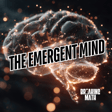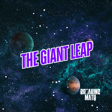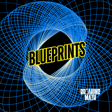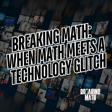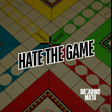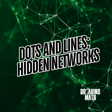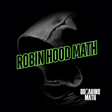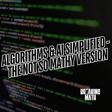Introduction to the Episode
00:00:00
Speaker
Welcome to another episode of Breaking Math. I'm your host, Autumn. And today we're getting to talk to our guest, Dr.
Meet Dr. Christoph Bartnick
00:00:07
Speaker
Christoph Bartnick, a full professor in the Department of Computer Science and Software Engineering at the University of Canterbury in New Zealand.
00:00:16
Speaker
He's not only a national record-holding swimmer and para-swimming advocate, but he's also a seasoned computer scientist with a passion for applying mathematics and programming to optimizing swim
Swim Training Patterns Explained
00:00:29
Speaker
training. In his new book, Swim Training Patterns, he introduces a formal swim markup language and uses concepts for the Fibonacci sequence.
00:00:38
Speaker
Prime Series sets and even some Python scripting to make workouts smarter and more engaging. Christophe, welcome. Now, what motivated you to write swim training patterns?
Motivation Behind the Book
00:00:50
Speaker
Well, I you spend a lot of time in the swimming pool. i'm ah I'm a dedicated swimmer. And to be honest, it's not the most exciting exercise you can imagine. So if you're jogging or cycling, you can enjoy the environment and see the changes and even talk to people.
00:01:05
Speaker
But with swimming, you are in a pool and you stare tiles and you swim up and down and up and down. And that is, so some for some people, it is relaxing and almost like ah get a zen feeling out of it.
00:01:20
Speaker
um For me, I need to keep my mind occupied as well. So my mind wanders quite a bit while we swim and then I start to think about all sorts of things. One of the things that really crossed my mind i is is the the concept of patterns.
00:01:36
Speaker
In swimming, surprisingly, we use a lot of patterns and of course and in math it has a specific meaning, but we do a lot of repetitions. And if you would start, let's say, a swimming set where you repeat something, let's say,
00:01:48
Speaker
You repeat swimming 25 meters or 25 yards, and you would say, i so i swim two times, four times, six times. And if you then tell somebody to swim seven times, they get very upset.
00:02:01
Speaker
It's not how it's supposed to be. It's two, four, six, eight. And so people really are invested in this idea of patterns. And at the same time, we have to go at this challenge of coming up with something new. Because we if you are, you know let's say, a more successful swimmer, then you spend hours and hours every day in the pool.
00:02:20
Speaker
And you just have to come up with something else to do, something more interesting to do. otherwise You just completely disengage and it just extraordinarily boring. So, yeah, those were the two main motivations. But it also, I guess, comes something to me as a person. I have a lot of broad interests and one of them is more in math and computer science. But I also do there a lot of sports and also artistic work. So bringing all these things together is something that I always wanted to do. Now, tell us a little bit more about your swimming and computer science journey.
Dr. Bartnick's Swimming Journey
00:02:52
Speaker
Swimming is, I've always done it. Well, my parents, well, let me put it this way. When I was a kid, I sucked at every other sport and i also had a tendency to hurt myself quite a bit.
00:03:03
Speaker
Compared to that, swimming is a pretty safe sport. It is possible to hurt yourself. I accomplish that and many others do. We're banging our heads against the wall and things like that. So it does happen. But in compared to other sports, it's it is pretty safe. So I've always done that. I've always enjoyed it's always been part of my life. And it's just, yeah, it's just my sport. Computer science and math.
00:03:22
Speaker
Yeah, I've also always been interested in computers and math, amongst other things. And for me, I saw this overlap when our coach used to write, or still writes, all the programs that we have on the white wall. They would like write the instructions of what we're supposed to do in this session.
00:03:38
Speaker
And what occurred to me is that what he's doing is he's programming us. This is a programming language. That's what it is. It's set of instructions to you know execute something and has a lot of the concepts that we are familiar with in programming. So, for example, repetitions are very popular in sports. Well, in computer science, we call them loops. You've got if-then conditions. We have all sorts of mechanisms that you see on the whiteboard which are mirrored in
Scientific Approach to Swim Training
00:04:04
Speaker
computer science. So it is a very primitive technique.
00:04:06
Speaker
programming language. And of course, then the idea would be like, well, can we do that? Can we do it better? Can we actually use the full power of programming a languages to do even more amazing programs? So yeah, that is the kind of intersection with it. It's it's a bit unusual.
00:04:21
Speaker
um And so the book that we're talking about, Swim Training Pants, about today was a quite difficult sell to pitch to people, to pitch to publishers, because you've got math books and you've got sports science books and It's not much in between. I mean, you only have it to the degree that you have like scientific science books way by ah in terms of sports science or how to improve your training, for example. You've got that. And sometimes, particularly in the U.S., let's say, um there's a lot of quantification.
00:04:49
Speaker
and around baseball and basketball and they analyze the shots and all of that. So there's a quantitative analysis of sports that exists as well. But in terms of sports training, in terms of making it more interesting and entertaining, I didn't see anything. So that was the the gap that I was after.
00:05:05
Speaker
But convincing a publisher that this is a good idea is difficult and also justifying it because the audience, like the overlap of people really interested in it, like people who are interested in math and science, they're interested in sport, that overlap.
00:05:19
Speaker
Not the biggest one. Completely understandable, but that also helps train Olympians and mathematicians and simply anybody who models fluid dynamics
Mathematical Models in Swimming
00:05:32
Speaker
and biomechanics, right?
00:05:33
Speaker
So if I know that you've thought a lot about applying mathematical models in this sense. So how does that refine these strokes when you're swimming, just and in an optimization pattern.
00:05:48
Speaker
So do you would you like to go into that a little bit for like the repetition in the pool as kind of the embodied algorithm? Well, it does not exactly help you. it is not about, let's say a mathematical model of the human body.
00:06:02
Speaker
or that would do with any kind of fluid dynamics. No, it's not that. And also, we do not have any empirical evidence in terms of that this will make you faster. But this is where it gets interesting.
00:06:14
Speaker
If you approach so swimming or any kind of sports really from a more scientific point of view, where you say, look, I'm going to control the exercise of the athletes and I'm going to tell them exactly what to do.
00:06:25
Speaker
how and what to do, how much weight, how much distance, how much speed, and I control it precisely, and I measure their output or the improvement in swimming, then you need to have a way of controlling it precisely.
00:06:35
Speaker
So you need to being document exactly what exactly did the swimmer do. And of course, we've got like so sport watches these days that can record certain things. So that's already something.
00:06:47
Speaker
For swimming, it sort of works, but not exactly because it's only on your arm, right? So it cannot measure what you do with your legs. So if you do a sort of drill where you do freestyle arms and let's say, I don't know, some butterfly kick, he cannot know this.
00:07:05
Speaker
So in that sense, there are quite some limitations. And of course, it doesn't necessarily instruct the athlete what to do. It records after i mean while you do it and afterwards, you can look at what you've done, but not necessarily what you want to do. And of course, we've got problems, which is like, it almost sounds silly for us from a computer science perspective or for a science point of view, is how do we exchange data?
00:07:26
Speaker
Like, how can I tell my analysis program about what exactly was done? There's no export function on the on your Apple Watch to export this as a CSV file.
00:07:37
Speaker
So that you can then import it somewhere else and do something with it. All of these solutions are islands and there's no agreed upon communication standards between the different platforms. So whatever you pick, you're an island exporting it almost impossible. And so if you want to then do a more scientific approach, yeah, there's nothing there.
Swim Data Standardization
00:07:56
Speaker
So part of this book is to formalize, like a programming language, is the formalization of a natural language, so to speak, to formalize it to make it machine-readable, to make it machine-understandable, so that the computers can read it and then you can do analysis on top of it.
00:08:12
Speaker
So this will be extremely useful for, of course, top athletes who have this kind of ambition to be the best and have to optimize their training to as much as possible. So that is definitely for them.
00:08:24
Speaker
It is good for any kind of technology company, really, who wants to use this. So there are several mobile apps, fitness trackers, but moving data, like say if you have it on an Apple Watch and now you want to go to Garmin or you want to go to Strava or something else, to let this system know exactly what you've done is almost impossible other than a text description, really. And so nobody can really understand that.
00:08:48
Speaker
And then, of course, there's another aspect to it. It was more for casual swimmers, I suppose. Every time you go to the pool, you have to ask yourself, what am I going to swim today? And then you need to get inspiration or you need to find these programs somewhere. And if you want to then Google it, give me something interesting program, it will give you something. But again, unstructured. You cannot really, well, the best thing you can do is you can print it and take it to the pool with you.
00:09:09
Speaker
But you cannot systematically search. You cannot say, I want to program that structured. that many meters, has that kind of aspects like that much freestyle, that much this, you know, it is it because there' Google cannot index it because it has no semantic understanding of what this all is. So therefore, the swimming markup language we've developed is this kind of communication standard that enables all these different applications.
00:09:32
Speaker
Wonderful. now Now, when you're looking at this randomness and variability with your swim training, is there a probabilistic or stochastic element in any of these patterns?
00:09:43
Speaker
Interesting question. I'm an operations researcher. I am just curious because you see the repetition in the movement. And sometimes you look at that when you're going to create the model for somebody. put a point there in the sense that you've got an idealized version where you tell people swim 10 times 100 meters.
00:10:03
Speaker
Okay, you can do that. Are the people really going to do that? Different story. Do they make mistakes? Absolutely. So in that sense, there's always a discrepancy between what the people did and what they were supposed to do. So yeah, there's definitely noise.
00:10:16
Speaker
And that's also for these machines. I mean, like when they record something, they interpret your movement, but they can, of course, not be completely certain. So if I swim, it gets it like 90% right in terms of the distance at least. So it like counts the laps that i do.
00:10:31
Speaker
ah Fairly ever perfect. Well, there is, of course, always randomness involved. But that is for yeah the human movement terms of distinction, let's say freestyle from butterstroke stroke, just from the arm movement across different people. It's hard. Yeah, but that's a different problem. And I cannot have not yet contributed to that in any meaningful way.
00:10:51
Speaker
You want to, let's say, have, you need to describe what freestyle is and what all the different strokes are, the drills. And this was the problem that I had in the book when I, there are so many drills people do. Like let's say um they would like combine different strokes or do some exercise in an attempt to improve stroke.
00:11:08
Speaker
Well, then now you've got the problem that you have to define it. What exactly is it? And I try to do it in words, but there the problem is it's it's it's almost impossible to really always get it in words. It's so much easier.
00:11:21
Speaker
if you have a visualization.
Incorporating Mathematical Patterns
00:11:23
Speaker
So i've just been I've been contemplating and I tried out different type of computer renderings to have um essentially an abstract human body that shows you on the page about what it is.
00:11:35
Speaker
But then I came the realization that the the movement is essential. You have to see the movement. So I ended up video recording it. So I took a camera to the pool and I had people do it in front of me. I video recorded them. And i think that's probably the only really good way all of showing people what exactly that stroke is, what exactly that drill is.
00:11:54
Speaker
but So the connection between math here and swimming is on ah on a different level, and that is patterns. So, for example, if you look at sequences of numbers, so we've got this wonderful internet database of internet a of sequences.
00:12:09
Speaker
right So swimmers, again, we do a lot of repetitions, therefore we have like 2, 4, 6, 8. It's a sequence. It's very simple. um But there are so many more interesting sequences that exist in the realm of math.
00:12:22
Speaker
had Let's do the Fibonacci sequence. No problem. So instead of you know these very boring patterns, we do something that has a different mathematical foundation. And of course, if once you know the concept of the Fibonacci sequence and you understand how it's being calculated,
00:12:37
Speaker
It's very easy to continue it. You always know what the next number is. So you only have to remember the pattern and then, you know, guessing or figuring out what the next number is, it's super easy. But you need to know this pattern. And so I've been looking at finding these kind of patterns that are easy to understand.
00:12:53
Speaker
So nothing too hard so that people like don't even understand how to create this pattern. And that are also within the scale of human performance. So we've got some sequences, for example, that explode in size very, very quickly. They escalate.
00:13:09
Speaker
And then it becomes not useful anymore if you've got a sequence like 1, 3, 5, 10 million. I can't do anything with 10 million. I can't swim 10 million lanes or strokes. It's just too much. So it had to be something in the scope of of human performances.
00:13:24
Speaker
So the idea is to take ideas from math about patterns and ideas people had and the history of math. And then transform them into something that is doable for humans and and interesting. So you can, while you in the pool and swim, you can actually think about these patterns and think about these ideas. Okay, good to know. Now, do you have any favorite patterns that you have found while going through this book? Oh, that's a hard one. So many good ones for different reasons. Sometimes it's the stories behind them that are so fascinating and so silly, I guess.
00:14:00
Speaker
So one of the things that happens is that people start to hum in their mind. They start to sing songs in their mind when they're like bored or want to keep themselves entertained. Did you ever do that for any for any activity? Quite a bit. Okay.
00:14:13
Speaker
but that Especially when like on the treadmill and you forget to have ah headphones with you. Okay. So did did you ever have a situation where someone was stuck in your head?
00:14:24
Speaker
Yes. So that happens. And that's an interesting psychological thing, these kind of earworms. But if swim training is so boring and songs, we use songs to de entertain ourselves, of course, the next obvious question is, what is the most repetitive and boring song ever pops up?
00:14:39
Speaker
Right. And there are a couple of candidates. I mean, what do you think? Make a guess. What is the most repetitive pop song you can think of? All I can think of is Gimme Gimme Gimme by Mamma Mia. Okay.
00:14:50
Speaker
All right. so That has become so quirky little thing for folks. I'll put a little picture up on the screen right here. I got a new dog and he will not sit still for baths.
00:15:02
Speaker
and Okay. And he has had a medicated bath for the past couple of weeks. And... He's not a swimmer. He is not a swimmer.
00:15:14
Speaker
So he has been singing and howling along with me. yes The top question really is, i mean there's a more general argument that music over... over the years have become dumber. There's an argument for that.
00:15:28
Speaker
You know, definitely shorter, but still never questioned. couple of candidates, particularly some of the songs from the 70s, when you think about, what are good examples of that? Funky Town.
00:15:40
Speaker
Right? Yes. Would you take me to funky town? mean, there's not much to it, to that song in terms of lyrics. So the question would be then from a mathematical point of view, how can we quantify that? How can we determine that one set of lyrics is more repetitive and boring than another? And the interesting part is, yes, we can.
00:15:59
Speaker
And it comes from an interesting ah sideline, which is compression. In the transmission of information, you need to kind of be efficient because it is expensive to and transmit information. There's a cost associated to it.
00:16:11
Speaker
And that's already started with Morse code. So already there, people, instead of just, you know, doing the alphabet, we come up with abbreviations. And so you would have a book, a dictionary, where you would have some sort of phrases that you use frequently and you've got an abbreviation. So you don't have to type the whole sentence. You just...
00:16:32
Speaker
abbreviated works perfectly fine. It's fast, it's more efficient. um Problem is, both sides need to have the dictionary and they need to have the same book. And if you don't have that, and if, let's say, if you had seen, you don't have that book, you're you're doomed. So the idea was like, well, how can we transmit, ah compress this so that we don't need a book and it can be more efficient? And some researchers came up with a compression algorithm.
00:16:53
Speaker
And it's based on repetitions. So the more repetitive a certain piece of text is, the better you can compress it. So the compression rate becomes a measurement for repetitiveness.
00:17:05
Speaker
So I walk the reader through how this is actually done exactly. and then you can And then we applied it to a couple of songs. And drumroll, most boring song ever made around the world from Daft Punk. Because 131 times the lyric around the world.
00:17:23
Speaker
That's it. So that is the most repetitive song ever. And then we come up with ideas. Okay, well, how can we turn this now into a swim training program? And that was a bit cheeky there. Because I figured, okay, once we go for the absolute pinnacle of boredom, then we must do the most boring program ever. So we just swim 130 times 25 meters or 50 meters, depending on your skills.
00:17:46
Speaker
i mean, it's the pinnacle of boringness. And while you do that, you know, hum that song in your mind. I think, you know, it's probably stuck there and will always be stuck there. I mean, I'm of that age that I know the song and used to dance to it.
00:17:57
Speaker
But, you know, that's just a bit of a cheeky example. But here you see an idea in math, compression algorithms, repetition, and how that brings us to swimming training and how relates to swimming
Visual Beauty of Math
00:18:07
Speaker
Okay, wonderful. Tell me a little bit more about some of the other patterns that you have in the book as well. So one interesting one is, again, not necessarily from a mathematical point of view. has a mathematical component and a lot of people will be familiar with. It's the typical off-by-one era that we occur so often, or it's also called the fence post problem.
00:18:27
Speaker
And so in Germany, there they started an art project, which was fantastic, and they wanted to celebrate the anniversary of a city. And it's pretty old, hundreds of years. And they came up with an interesting idea of doing it, and it was a long-term project.
00:18:41
Speaker
art project And the idea is that they would put a piece of concrete, a block of concrete every 10 years. And then over you know the next 100 cents of years, um ah this would actually, 1,200 years, I think, yeah. Eventually, this would form a pyramid and it would take...
00:19:00
Speaker
as much time um as the city already existed. And so in every 10 years they come together, they place the next block. It's a big media thing. Fantastic. So I think overall it's interesting idea having an art project that takes such an incredible amount of time. There are other examples. There are some music pieces being played that also will last for years.
00:19:19
Speaker
And you actually have to come to this place to hear when they change the note. The idea of these kind of long-term art projects like exist. Wonderful idea. Now, the problem is they're off by one, which means that they celebrated the anniversary.
00:19:33
Speaker
And when they placed the last block, it is actually another 10 years until actually the the anniversary occurs. So the next there is something missing at the end. And they could have easily overcome this problem by, for example, waiting 10 years to place the first block.
00:19:48
Speaker
because then they would say, like, well yeah we now complete the first 10 years. But they wanted to get started. They wanted to have something visible to start with. And this is something we see so often with public projects that something has to happen. We have to demonstrate activity. So we just go for it.
00:20:04
Speaker
And so the idea was that this pattern, um of well, leaves something to to to be desired for in the sense that wouldn't it be great that on the anniversary birthday they have next time around, On that day, they will place the last block, and that is just not going to happen.
00:20:23
Speaker
They place it base it 10 years early. So it's off by one unit of time, which is blocks of 10 years here. And then Matt Parker came around, famous YouTuber, math YouTuber, and he came up with an ah alternative design. And...
00:20:37
Speaker
There was a great design, except that it was so tall, it would stack the blocks up so high, it would be unstable. It would essentially, you know, if there was a good storm, chances are that thing would be blown up. So I took it upon myself to create an alternative design of 121 blocks. um And I found a solution. It it was possible to, you know, playing around with Lego blocks. And I came up with a good idea.
00:21:00
Speaker
And I then came up with a pyramid, which is 121 blocks. And so they can still change their mind. Even with the blocks they already placed, it is possible to still create this better, improved pyramid that will be stable and that will allow them to place...
00:21:17
Speaker
121th block at the last period of time. So that's the mathematical idea. It's a bit funny. I can show you some ah pictures of it and you can show it to the viewers. And then, of course, we translate that into a swim training program where then we take the topography of the pyramid and we swim that. So we take the layers and these are then the repetitions. So we swim the pyramid in thinking about the off by one error. Wonderful.
00:21:42
Speaker
So one thing I wanted to do with this book is I think that math is beautiful. And it's not just the ideas that are beautiful and their in their ingenuity and in their elegance, but also visually math is beautiful.
00:21:58
Speaker
And so I did a lot of graphs and visualization in this book to make it attractive. My goal was I want to open this book at any page and it's supposed to look awesome.
00:22:08
Speaker
That was my attempt. That's what I noticed going through it. Because you have so many different patterns and you have all of the code in here. You go into every little step and every graph that we normally just haven't covered from topic to topic. And seeing that, what was that process like when just writing the book in general for you? Yeah. So I imagine that who's the reader? And it was clear to me that while people have maybe an appreciation of math or at least are not scared of math, yes um that still a lot of people don't necessarily remember all of this. I mean, the math in here is high school level, nothing fancy.
00:22:50
Speaker
But still, you have to remember certain things. And so my ambition was that I want people who are of generally curious mind be able to follow all the steps. And that means spelling it out.
00:23:01
Speaker
For a lot of, let's say, trained mathematicians, it's incredibly boring. like, yeah, this is obvious. I can jump from here to there immediately. No problem at all. But for a lot of people, no, it's not so obvious. We don't exactly remember what all this symbol means and how you simplify an equation.
00:23:15
Speaker
So the idea was to make it digestible, accessible, really, for people. and that also means visually interesting. I talked to another um a YouTuber the other day and who was a swimmer, and he said, look, I didn't have any math since high school.
00:23:28
Speaker
This looks very, very intimidating to me. And I get that, but... My hope was that the visual appeal, when you look at this, and you go like, wow, that looks fascinating. And let's start reading about it. like That is kind of what I was trying to do.
00:23:43
Speaker
From my own, again, this is one aspect of my of of me being me, is im I am something to be a designer, maybe even an artist. Making it visually appealing has always been very, very important to me. So I enjoyed making these graphs. There are a lot of them in there.
00:24:00
Speaker
There is a list of figures in there. is like, oh, I don't know how many, over like 200 or so. I don't know how many, a lot of them. And again, it is idea is to offer people something that like they can open the book at any page, they see something beautiful, and hopefully it will motivate them to start reading digging into it. And it's not sequential in terms of that. You have to read it in sequence.
00:24:22
Speaker
So you can literally look at any chapter, any section, and any pattern and start reading. So it's not built on each other. So again, making it accessible, being able to make you go to the pool in the morning, open the book out of any page and say like, okay, this is what I want us from today. You talk about having this for any level.
00:24:40
Speaker
What's the biggest thing that you would want coaches or swimmers to take away from this? Because you look at various syntax for your audience, right? What is one thing that you can highlight if you're a coach or you're a swimmer and then maybe even as like a computer scientist or mathematician? Yeah, I'm and baffled about how low tech – I don't mind low tech, so it's really difficult usually to beat pencil and paper. It's a very, very powerful tool.
00:25:07
Speaker
It's difficult to make something that's better than that. And so there's a lot of practical advantages of a whiteboard and putting something on there, right? it's there it's It's difficult to beat. But still, I was always mesmerized when when I would like visit another country and I visited another swimming club and I would go there.
00:25:22
Speaker
And they share the program in a way that was new to me. And I could not read their program because I didn't know the abbreviation. Sometimes I didn't know the language. And they've just got patterns which I don't understand.
00:25:34
Speaker
So having something of a shared language that we can all... understand a thing would be beneficial. And also being able to share wisdom. So if a certain drill works for your team and for your swimmers and you've got success with it, wouldn't it be great that you can actually tell other people about it?
00:25:52
Speaker
And in science, that's what we do. That's why we got the language of math. We have agreed upon a certain set of symbols, who have certain meanings, and we can use it. We can talk about things in a mathematical way.
00:26:03
Speaker
And that's what we need as well. And so I would encourage coaches to to get involved and use this language and put their programs online so that other people They read it.
00:26:14
Speaker
They can know about it. And one of the things that always was puzzles me is is ambiguity. It's like you coaches think that some of their instructions are crystal clear. But once you start thinking about it, it's like, well, there are actually multiple interpretations of it.
00:26:29
Speaker
ah What he you would tell us just to do. And that then sometimes leads to confusion in the lane. People start swimming different things and that's a bit inconvenient because if you don't swim the same thing as a group in the lane, then, you know, you run into each other or it just it just starts to be a mess and it should be avoided. so But that is something that happens in general. Natural language is ambiguous. It's incredibly ambiguous. And that's why we don't use it for math. We have another language that is more precise. We need that because English is not it's too ambiguous or any any natural language, I should say, is too ambiguous for once.
00:27:06
Speaker
And also it would just take too much space. So, I mean, in the very start of of math, as i understand That's how math was communicated in words. You would just write it out and try to describe it because you didn't have this kind of symbolism.
00:27:19
Speaker
and That came later. and Then, of course, different have different people different symbolisms. and so ah There needs to be a phase of bringing it all together an agreement and agreement. That eventually happened. and Of course, it's never perfect, but we're pretty good.
00:27:33
Speaker
That hasn't happened for swimming. um Maybe at some point it will. and Hopefully, this is a tool that's helpful for people to move in this direction. curiosity can this pattern-based approach also be applied to other sports oh absolutely absolutely any sport um that uses structure or there's
Math and Science in Sports
00:27:52
Speaker
some well mean i guess every kind of training has structures but let's say the other thing i do is cycling and i mean if you just cycle around okay you got a route okay cool but if you're bit more professional then you actually start to go on a trainer and you have specific you know
00:28:05
Speaker
um resistance training and and and you know you you become again more structured in your thing and then you need to have repetitions and pauses and intensity levels and and that's where it all starts. And yes, absolutely. If you go to the gym you've got machines and do repetitions on a machine, yeah, absolutely.
00:28:21
Speaker
So um it is nets as more universal. um This one is particularly now for swimming because of the domain-specific knowledge. So drill something that we do that you don't do in the gym because there's just no, well, there are a lot of different exercises you can do, I suppose, as well, but it's just different. So the the more abstract concepts like ah repetitions or intensity levels or how long you take a pause to recover, heart rates, this is more universal and that can be definitely used for for any sport.
00:28:50
Speaker
But the more specific things like butterfly doesn't exist in cycling. No, but there are some flips and tumbles and ah other things, whether it's an ice skating, figure skating or gymnastics that could also be applied to this.
00:29:06
Speaker
Not exactly in the repetitive sense, but more of the having either a rigid body with the motion going around it or vice versa to see those patterns and how that could be applied. Any kind of, the translation to any kind of sport that indeed requires repetitions is, of course, the most obvious thing, structured exercise. And so any kind of sport that, what's the term? Oh, well, it's just on the top of my tongue.
00:29:30
Speaker
ah I'll come back to it later. Anyway, but any kind of sport like running, jogging, cycling, those are sports where this will work perfectly fine. If it comes to a sport that requires artistic expression, I mean, of course, if you're an autistic swimmer, you also need to do like physical exercise and that will be fine. Artistic expression, a little bit less so.
00:29:49
Speaker
And that's, of course, then you come up with what you're alluding to is to have a virtual model of for or even a digital twin of of a human body that you can describe to geometry and position and so forth.
00:30:00
Speaker
Sure, if that exists. And that is a spar of part of sport science. A lot of people are into it where this particular approach is not quite as applicable, I would say, at this point in time.
00:30:10
Speaker
Now, what are some of the most innovative aspects of your training philosophy with us? Keep the mind engaged. This is something actually a colleague of mine just sent me this book, Andrew, and and he points it out that staying mentally engaged in what you do is important for training success.
00:30:28
Speaker
So if you switch off, This might actually reduce the efficiency of the training to start with. So again, having something to think about while you do it depends little bit on what for what your purpose is. So for some swimmers, if you're high-performance swimmer wanting to win the Olympics, that's important. There lot swimmers who are not like that. There are more recreational swimmers. And also for me, actually, I sometimes enjoy switching off. As matter of fact, I'm always very grateful if I'm not leading the lane because I don't have to pay attention. I don't have to count.
00:30:55
Speaker
I can just do whatever the person in front of me does and I can switch off and then my mind wanders. So that is a different type of activity. And then switching off. like this This is the beauty of swimming. There's no smart device. There are no messages. There is no Twitter. there There's nothing.
00:31:11
Speaker
You can't even talk to people. It's wonderfully isolating. Sometimes it has its advantages when you're coding or swimming. It's like, don't talk to me. I'm doing this. Right? Yeah.
00:31:22
Speaker
yeah so there's you are by yourself and in a way that's a good thing and you have to focus on your body you have to focus on your breathing and these are aspects probably aspects that i i enjoy i'm not that ambitious that i want to uh push myself to the limit every training session no i i don't do that i do compete and you know For master swimmers, i mean know i'm I'm no longer a young one, so for master swimmers that's fun to do and occasionally I win something. But that's different from, let's say, of the current. I mean, and right now in Singapore, we've got the the world championships happening.
00:31:59
Speaker
And of course, the young folks there, they have a different view on this. But again, for them, it's so important to be able to quantify it, being able to correlate their what they've done in training and how that results in in in performance.
00:32:12
Speaker
So that is crucial to a scientific approach. And so that's the but kind of bigger question about what is the role and contribution of science in sports. And of course, I would argue, yes, this becomes increasingly important because at some point you max out what you can easily achieve and then you have to become systematic. Now, switching topics a little bit, what sort of ah code do you talk about? I know you have a couple different languages for people who are just listening. Yeah, what what programming languages do you use okay um to go into this a little bit?
00:32:44
Speaker
Right. So when I started, this was a very interesting journey because what I was looking for, like, hey, don't design what you can copy, right? It's always silly. So my idea was like, why don't we just take the easiest possible programming language and just use that?
00:32:57
Speaker
That would be a very justifiable point of view. And there's some easy examples like Python is a very popular language right now. But even then already, the complexities you have in Python are considerable. So if you just take the example of a loop, there are several components in Python for running loops and that are not necessarily necessary for swim training. So it has more features than we already need. It's more complex than necessary. The other aspect I wanted to do is I wanted to be in this in-between state between a natural language and, let's say, a programming language, something in the middle that is still easier for humans, that you can literally just read what the meaning
XML and Python in Swim Training
00:33:34
Speaker
You don't have to know special words or special syntax or special symbols that we already have in programming that makes things much more efficient and much faster. and We have them for a reason.
00:33:46
Speaker
But no, I want it to be more human readable. It's a compromise between something being human readable and machine readable. And eventually I came across this almost ancient technology by now called XML.
00:33:58
Speaker
extendable markup language. And when this came around or was invented, the idea was to formalize knowledge systems. And the beautiful thing of it is it has a ah method of verifying and validating documents.
00:34:11
Speaker
So the idea is like if you write something in ah and a markup language, you can then validate to see if it's correct. And then you can do transformations with it. You can transform it into any other language. That was its main paup purpose originally. Document creation, you have your model knowledge, and then validate and then transform it.
00:34:28
Speaker
The most widely used example of a markup and and language like this is called HTML. It's the basis of all the web pages. It's a markup language, same system, but you can create...
00:34:40
Speaker
where HTML is made to describe web pages, but you can do your own language that describes other things. And there are markup languages for all sorts of domains and topics, but not for swimming yet.
00:34:52
Speaker
So I created the one for swimming. And the beautiful thing is that it is quite human readable. It is machine readable. It's a good compromise, and that works. So that's wonderful. For the more ambitious person, we also built a bridge to Python.
00:35:07
Speaker
So here the idea is like, okay, why don't we actually take the full power of a programming language and let go of it and let's see what we can do. So we're now at a point where we we can use Python and we cannot just create one program, but we can create 10,000 programs because it doesn't matter.
00:35:25
Speaker
Computers don't care. So we can now mass produce programs using something like Python and using some more advanced features in there. And Python is arguably the most accessible program in language right now. It's massively being used in in schools and universities as the first program in language people learn. So that seemed to be ah good choice. Now, were there any standout takeaways during this process when you were writing?
00:35:51
Speaker
Well, there was a personal one, which is that writing a book is fun. So as an academic, we have to handle so many things at the same time. And we work on many different projects, so many different papers, and you're fragmented. Your whole day is fragmented.
00:36:07
Speaker
So I had the pleasure and privilege of being on a sabbatical and I was able to dedicate myself to one project largely and that was it. And working on this one project for a longer period of time. And that is just very, very satisfying and and I appreciate that. And so it was just an enormous amount of fun for me personally to create this and I hope that the joy...
00:36:28
Speaker
and satisfaction I receive from writing it will be mirrored when people read it and they also see it. I usually think there's a connection between these two. If people enjoy the work they do, then the results usually also enjoyable for others. That's a personal thing.
00:36:42
Speaker
Other cute little things were, well, I'm not sure whether you use LaTeX for writing. It's a writing environment that a lot of scientists use um and because it's a formal language again. We love formal languages.
00:36:56
Speaker
I'll say 80% of our audience probably has used it at one point or another. Okay, good, good. So little little fun statistic for I'm a big fan of More or Less. I mean, that's just one of my favorite podcasts over there.
00:37:15
Speaker
Okay, so LaTeX is, I can assume people roughly know what LaTeX is. Those people who don't know what it is think about it as a super-duper Microsoft Word that lets you do amazing things.
00:37:27
Speaker
And since it's standardized, you can use functionality that other people created. And I'm mesmerized about the fantastic community we have here. If you have a problem and you want to write about something, you want to show something, somebody would have done a library does it for you. So if you want to do visualize a chessboard, somebody's done that.
00:37:47
Speaker
If you want to show a clock, somebody's done that. If you want to have coffee stains on your paper, somebody's done that. If you want to have virtual Lego blocks on your but on your PDF, somebody has done that.
00:37:59
Speaker
It is just absolutely fantastic about the creativity of the community and how this is a project where this works. Once you agree to collaborate, once you agree to standardize and you can work together, the most amazing things can happen.
00:38:15
Speaker
And that's the power of the community. And I hope that this little project here might be the seed for a community of swimmers who engage in creating beautiful patterns that then other people can enjoy and use.
00:38:28
Speaker
Yes. On that plug, Overleaf, please sponsor both of our channels. This book was done in Overleaf and I created a ready to print PDF, wonderful, and ah i gave it to my publisher and they struggle.
00:38:41
Speaker
They struggle with it. and It is absolutely amazing to see how the printing industry has not really caught up on on this. So yeah, interesting. They make everybody write get their thesis in LaTeX.
00:38:55
Speaker
You would think that the publishers would do that. Yeah. The publishing industry remains a mystery to me and and it's it's it's it's difficult.
00:39:08
Speaker
So LaTeX, yeah, absolutely amazing. um Loving it. I also learned a lot personally. I learned some things about maths, obviously. um I learned how useless AI is. some degree Yes. um And yeah. Now, like what were some of the challenges actually that you faced with when just writing the book or anything that surprised you as you went through the process of writing? Well, so there are different people write in different ways. So I call them the plotters and the non-plotters. So the non-plotters are people who just start writing and things happen while they happen and the content develops while they do it and that's
00:39:44
Speaker
And it's a valid form of writing, as people do, and particularly in the area of fiction, this is perfectly good. I'm a plotter, which means I work out the structure of the but of the content up front and work out everything I want to have, and then I start digging in. So I'm more on that side of things. And so I knew what I wanted pretty much, and then it's just a matter of getting through it.
00:40:05
Speaker
And then to some degree, since there are a lot of patterns in here, I had to look around and see what patterns are there. that are easy enough that I can, let's say more regular people, non-math professors can actually understand and that are still interesting and not trivial. And that's that's this very difficult balance that we find where a lot of mathematical ideas very, very quickly become so difficult that nobody really without any math training can understand it.
00:40:31
Speaker
And then what you're left with is all these patterns which we've gone over and over and over again. I mean, how many ah times do we have done the golden ratio, right? How many times have done the Fubonacci sequence? mean, for people who are in math, it almost becomes boring. But for people who not in math, this is the kind of level um at which they can you can still reach them, let's say. I find this an interesting challenge to find this middle ground.
00:40:54
Speaker
And a lot of science communicators in the field are doing it. I'm always looking and and amazed about what what kind of ideas they come up with and what they... What they cover and do they not cover? Yeah, in a sense, no your know your audience is important and and and getting a feeling for what they might work for them and whatnot. So i've I've gave this book to several of my colleagues and friends and other swimmers and i asked, hey, what do you think about it? do you understand it? and And some of them were like, yeah, as soon as I saw the math, I just skipped the page and moved on.
00:41:21
Speaker
Whereas other people were like, oh, wow, yeah, now remember how that was done. Oh, this was really cool. I loved it. So it's difficult to find the right balance. And of course, you can't satisfy everybody. But I hope that at least there are a little bit of patterns for everybody. And some of the things are more well-established ideas like the golden ratio for Fibonacci sequence, prime numbers. I mean, we know this. It's it's pretty easy for most people.
00:41:42
Speaker
But I hope there was a couple of gems which are new ideas and something interesting that even mathematicians might be like, oh, yeah, cool. That's an interesting example. I never thought about it. Again, this book is not going to win any Nobel Prize in math.
00:41:54
Speaker
Absolutely not. There's recreational mathematics. But sometimes when we make this jump to reality and and things that happen or applications of knowledge, um then sometimes we find little anecdotes of of things going right or going wrong and it can be very interesting.
00:42:08
Speaker
So you have a little Easter egg about what you want to do with the book, right? So tell tell people how you want to market the book and your project that you have. Sure. So one of the beautiful things is about community and we want to share the content of the book.
Global Book-Sharing Project
00:42:23
Speaker
So what will happen is that i created this wonderful limited edition box where the book will go in and this book I will give to some of my friends and colleagues and I will ask them, hey, use this book, take a picture of it, send it maybe back to me, maybe not.
00:42:38
Speaker
write your name in it, your location, and then give it to somebody else. You can't post it. You can't ship it. um It has to be given from person to person. And the idea is that these books, or there will actually be two of them, one traveling east, one of them traveling west. And the idea is that these books will travel around the globe and hopefully, I'm not sure when or ever, the book will come back to me and then I'll have a list of where this book has been. And a lot of people have had the chance to enjoy it and to swim something of it. And I'll also try to put a little RFID tracker into the box so I can roughly know where it is.
00:43:14
Speaker
And this is ah again, a mathematical idea um that came out, I think, fifty s or 60s. It was originally called called Six Degrees of Separation. So the idea is that how many...
00:43:25
Speaker
people do you know and it forms a network so the idea is that within six steps you're supposed to reach any other person originally was the focus was on the u.s so within knowing a friend of a friend of a friend within six friends you can reach anybody Now, if you put on it on a global stage, it's slightly different. If you're, of course, limited to swimmers, slightly different. But still, the idea is like, well, how close and how good is this network? And how can we send a book around the world and reach as many pieces of people as possible?
00:43:56
Speaker
And then maybe, hopefully, at some point, the book comes back to me and we have a memory of it. And Autumn just volunteered that she might actually keep track of this and help us spread the word. So if this box and the book comes around your desk, please have fun with it and pass it on. I'm super excited about this. Now, what's one thing that you want people to take away ah or learn about mathematics and swimming and computer science?
Interconnection of Math, Sport, and Art
00:44:22
Speaker
I guess a lot of people in their mind have this division about math is math, buddhist sport is sport, art is art, and, you know, they're all separate. And I don't see it in a way. I think... These things are all humans and we're little bit of everything, really. Math is not difficult. Math is easy.
00:44:38
Speaker
It's super easy. As easy as swimming, sometimes as boring as swimming. These things that are about ideas that people create and share. And I want people to use this technology to get inspiration, find something useful and entertaining and keep their mind busy while they train their body. And Christophe, as always, a thank you for coming on Breaking Math.
Explore and Engage with the Book
00:45:01
Speaker
If folks are looking to have another summer read, whether it's by the beach, heading back to school, some folks start in August and even September. I know weather is warm in some places, but if you want to find a really awesome book with some really amazing art and graphs that's accessible for anybody, whether you're a mathematician, computer scientist, Or anyone who wants to learn more about swimming and their applications, check out the link in our bio and also check out the project.
00:45:34
Speaker
Hopefully find his ah little book at some point, because of course, it's always six degrees of separation from knowing somebody at max. And someday, maybe you'll ah be involved with that as well.
00:45:49
Speaker
Until then, stay curious definitely stay out of the heat and go hit the pool.





